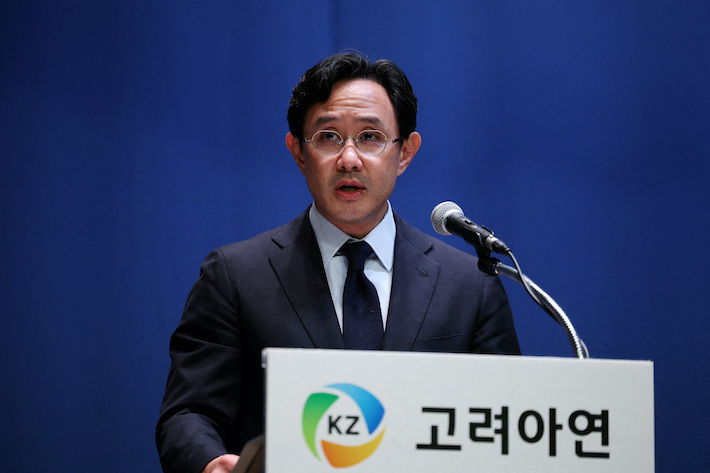(ATF) E-commerce giant JD.com’s healthcare spinoff has received the green light for an initial public offering, which is expected to be the biggest on the Hong Kong Stock Exchange since Ant Group’s IPO was derailed.
JD Health’s listing is estimated to raise $4 billion, and subscription is expected to begin on November 25, according to Chinese media.
JD Health, formally known as JD Health International, has submitted the post-hearing information pack (PHIP) to the HKSE for publication, JD.com said in a filing last week. PHIP is a near-final draft listing document posted on the exchange’s website after an application has been approved by the listing committee.
According to its prospectus, JD Health plans to use the funds raised for business expansion, brand promotion, R&D, and potential healthcare company acquisitions.
Business expansion plans include procuring more drugs, adding more drug warehouses, recruiting more doctors, and upgrading its technology infrastructure. It also plans to hire more R&D talents and invest in AI-assisted prescription verification technology and smart healthcare solutions.
The company said in its prospectus that it is interested in investing in, acquiring, or forming strategic alliances with “healthcare companies with advanced technologies and services” that have synergies with JD Health’s current business.
JD Health, which was incorporated in November 2018 through the reorganisation of JD Group’s healthcare business, is a third “unicorn” under the JD umbrella, besides the big data and cloud computing company JD Digits and the logistics company JD Logistics.
Its market cap is estimated to be between $20 billion and $30 billion by CIB Research, making it a strong competitor with Ali Health, which has a $37bn market cap, and larger than Ping An Good Doctor, which is valued at $16bn.
China’s largest healthcare platform
JD Health is China’s largest online healthcare platform by revenue. It also operates China’s largest retail pharmacy by sales, the online “JD Pharmacy”, with a 29.8% market share according to the research of Frost & Sullivan.
JD Health reported 10.8bn yuan ($1.6bn) sales in 2019. Its immediate rival Ali Health, an affiliate of e-commerce behemoth Alibaba, reported 9.6bn yuan of revenue for the fiscal year 2020, which ended on March 31. Insurance giant Ping An’s subsidiary Ping An Good Doctor is a smaller rival with 5.1bn yuan revenue in 2019.
The three companies have similar businesses including pharmaceutical sales, online medical consultation services and consumer healthcare services, such as the booking of health checks and doctor appointments.
Pharmaceutical sales is JD Health’s and Ali Health’s core source of revenue, accounting for almost 90%. Ping An Good Doctor’s strength is in online medical consultation services, and its revenue is spread more evenly between pharmaceutical sales and online healthcare services.
The first to make a profit
Although a late-comer to the market, JD Health was the first among the three to have made a profit.
Excluding non-recurring items, JD Health profited in all three years between 2017 and 2019. In the first-half of this year, it recorded an adjusted net profit of 370 million yuan on revenue of 8.8bn yuan.
Read More Related News on ATF
- Yatsen Holding revives China IPO sentiment
- Ant Group IPO swept off the table
- Asian pharma joins Covid treatment crusade
Ping An Good Doctor, which had its IPO in 2018, has yet to record a profit. It registered a loss of 213.6m yuan in the first half of 2020.
Ali Health has been listed on Hong Kong Stock Exchange since 2015. It announced earlier this month that it had a business turnaround and recorded a profit of at least 200m yuan for the six months from April to September, compared with a loss of 7.6 million yuan a year earlier.
While the three companies have similar gross profit margins, JD Health has the lowest sales and management expense ratios thanks to JD Group’s strong supply chain capabilities and economy of scale, Essence Securities said in a report.
Leveraging parent companies’ strengths
Building on the strengths of their respective parents, the three companies have had different business advantages, according to the analysis of Essence Securities.
Benefiting from a well-established supply chain of the JD Group, JD Health has a wider business scope and offers unique products and services such as ready-to-use traditional Chinese medicines, a pharma cold chain, and pharmaceutical wholesale.
Ali Health has a much larger number of active users than the other two thanks to the large user base of its affiliates Taobao and Alipay. It has 190 million active users, compared with 72.5 million of JD Health and 67.3 million of Ping An Good Doctor.
Ping An Good Doctor has a more professional team of in-house and external doctors than JD Health and Ali Health even though the team is much smaller in size.
All of of the external doctors that Ping An Good Doctor has signed with are from Level 3 Grade A hospitals, which are the best public hospitals in China. It also has a much larger online consultation service volume than the other two, with 831,000 sessions on average per day, compared with 400,000 and 90,000 respectively for JD Health and Ali Health.
Pandemic pushes consumers online
According to the research of Frost & Sullivan, the market size of China’s health and wellness industry in reached 8.1 trillion yuan in 2019 and is expected to increase to 21.8tn yuan in 2030, at a compound annual growth rate of 9.4%.
The industry is in the early phase of digitalisation when in 2019 only 2.4% of pharmaceutical products were distributed through out-hospital online retail pharmacy, and online consultation only accounted for 6.0% of total consultation volume.
However, digitalisation is speeding up driven by China’s “Internet+healthcare” related policies, the advancement of technologies, and the Covid-19 outbreak.
Ali Health said its business turnaround in the fiscal first half was largely driven by consumers’ increased awareness and demand for online healthcare services amid the Covid-19 pandemic.
JD Health observed a similar trend. After a brief decrease in consumers’ spending on health and wellness products in the early stage of Covid-19 outbreak, JD Health resumed normal operations and have seen an increase in demand for its online hospital services and pharmaceutical products, the company said in its prospectus.
In China’s Black Friday sale dubbed “the Singles’ Day”, JD Health’s online consultation service volume increased six times and the transaction volume of imported drugs rose 15 times year-over-year. The sales of imported wellness products also surged, increasing 270% than a year earlier.
According to Frost & Sullivan’s research, the total number of online hospitals increased over four times from 119 in December 2018 to 497 in April 2020. In the first quarter of 2020, the number of newly-established digital health and wellness companies exceeded 11,000.
The research firm expects the size of China’s digital health and wellness market to expand substantially, from 218bn in 2019 to 4.2tn by 2030.
























